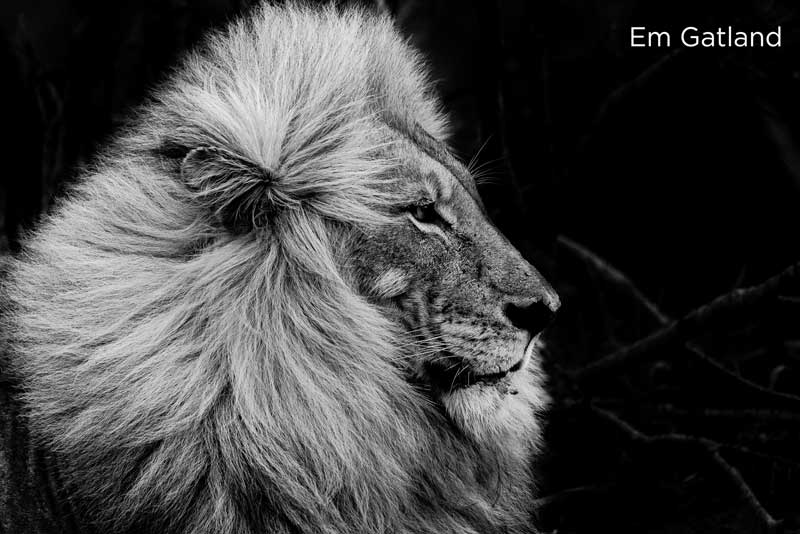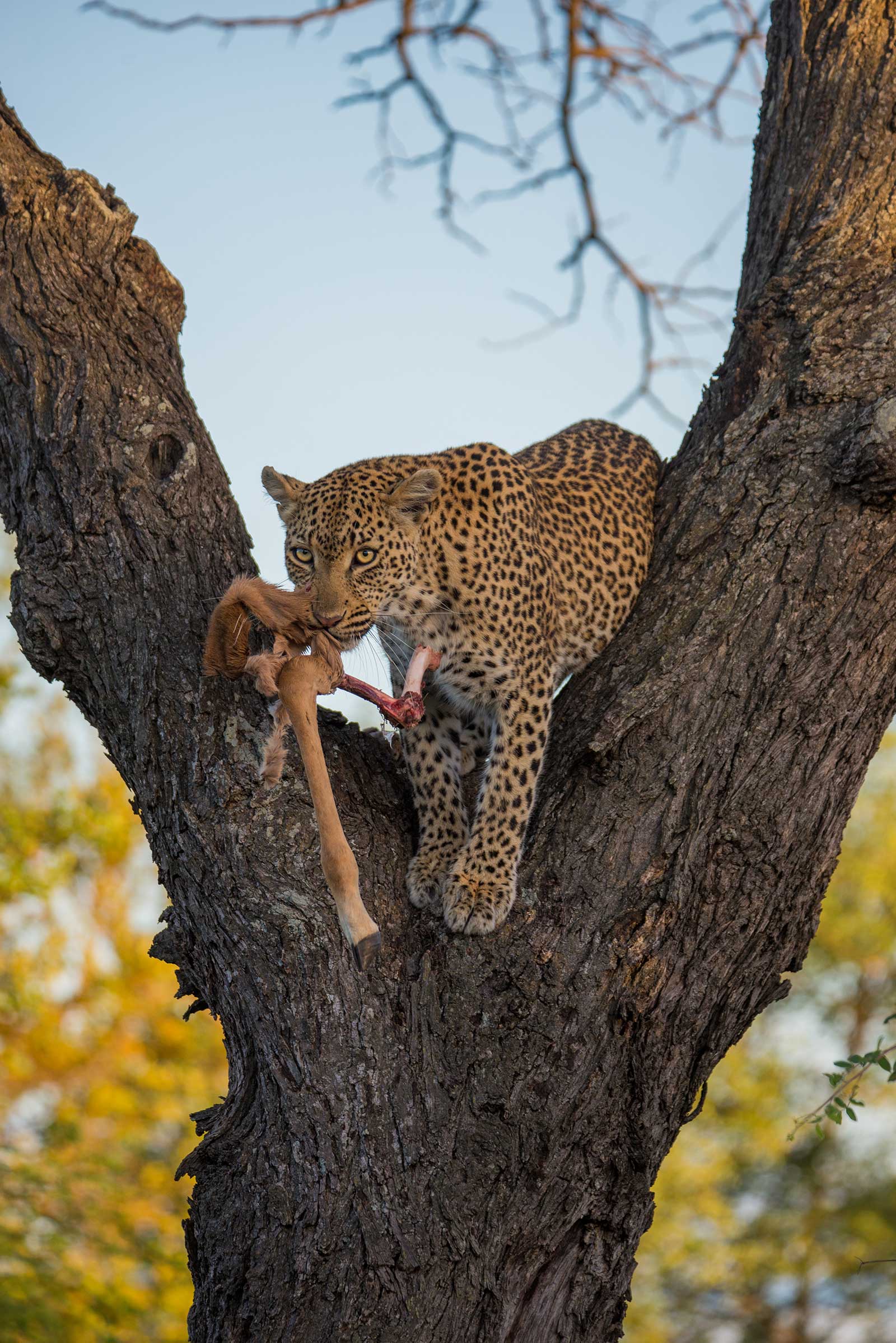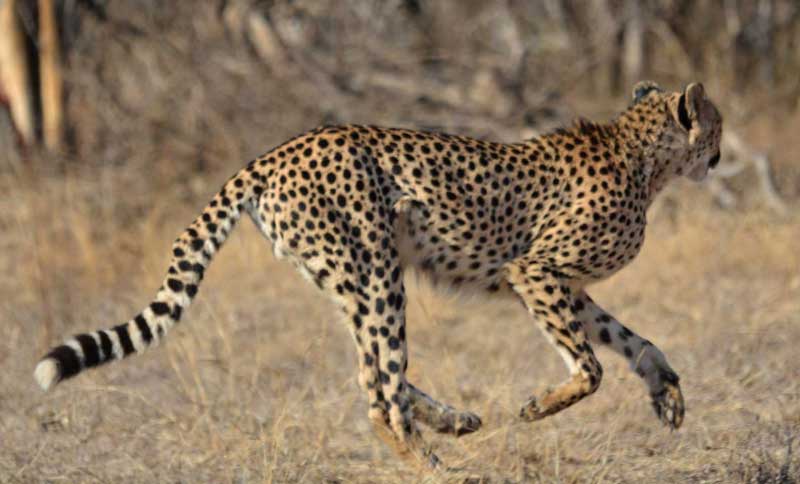Leopard, cheetah and lions are all part of the big cat family but have vastly different hunting and eating techniques. Let’s look at how leopard, cheetah and lions take down prey.
How they Hunt
Leopard: Leopards are solitary hunters. They dart between areas of cover until they are within close proximity of prey, and then they ambush. They approach prey by stalking and are experts at stealth mode. They keep low to the ground, and their tawny mottled colouring ensures they remain camouflaged during the most complex of hunts. When they are within a few metres, they lunge forward and get their quarry in a lethal stronghold, executing a swift kill tactic of strangulation and suffocation.
They’re adaptable hunters and target a variety of prey, from birds to small antelope. Hunts are generally conducted at night and during the cooler hours of dawn and dusk. Although they are lone hunters, on occasion you will see a female hunting together with her cub.
Their modus operandi is the element of surprise.
Lion: Lions are pride orientated cats, and hunt together with their pride. It’s mainly the females that hunt, and it’s a well-thought-out strategic method of hunting. The females target their prey and make eye contact with the rest of the pride, who are strategically surrounding the prey. The go-ahead is given with one look, and lions fly from all angles.
They claw their prey’s rump, shredding the area and clamber towards the throat region where they strangle their prey. When prey does escape the deathly clutches of the lions, they often die from injuries inflicted by the lion. The positions the Lions take are similar to positions on a football field. It is believed that male lions don’t always hunt because their lustrous manes are hard to hide!
Their modus operandi is the element of power.
Cheetah: When cheetah hunt alone they tend to take down small prey, but when they hunt in coalitions (normally cheetah brothers) they will target larger prey. Cheetah pretty much has only one hunting skill: speed. They don’t have the strength of their big cat counterparts and don’t even have the power to fight if under attack. They are so susceptible to losing prey and thus tend to be diurnal hunters, which eliminates plenty of carnivore competition.
Cheetah will target their prey and use the tall grasses or vegetation as cover while they stalk their prey. They cannot sustain long distances at speeds over 70km/h, so they approach their prey with caution and when within 100 m they will start their electric sprint.
Their modus operandi is the element of speed.
How they Feed
Leopards: Leopards feed very quickly and quietly. They don’t have the protection of a pride, and need to avoid drawing attention to themselves. They tend to drag their kill to an area of safekeeping straight after the kill has been conducted. The secret area is normally in the fork of a tree, but can also be in dense shrubbery in a drainage line. Stashing a kill means that scavengers and other competitive carnivores can’t access their hard-earned meal.
A leopard prefers a lengthy feeding session spanning days, and will often leave the kill to patrol territories and then return to feed. Leopard’s don’t like confrontation and will rather abandon their meal if the competition appears to much for them.
Lions: Lions gorge themselves until they cannot move, and they’re often spotted lolling around shortly after eagerly devouring a meal. Their stomachs expand and push on their diaphragm, which often leads to laboured breathing. After the kill has been made, the pride will feast where they took down their prey.
Hyenas will sniff out the kill and arrive in their clans, and wakes of vultures will descend upon the kill site. Lions have safety in numbers and will quite happily fight off any meal time intruders. There’s a hierarchy at feeding table, which normally consists of the males feeding first, the lionesses involved in the hunt are next to feed, and the Cubs are last in the pecking order. The dominant male is the first to feed because it establishes who is, ultimately, the king of the bushveld!
Cheetah: Cheetah are delicate creatures, way more so than their big cat counterparts. They are fussy eaters and dine with a sense of finesse. They select which organs to eat and will discard the rest together with the skin and parts of the quarry they simply don’t want to eat. Like leopards, the cheetah will eat swiftly and quietly. However, they do need to catch their breath shortly after a kill has been made. This is to be expected given the excessive speeds reached.
If a coalition of male cheetah conducted a kill, then one will keep watch on the savannah while the other one dines.




